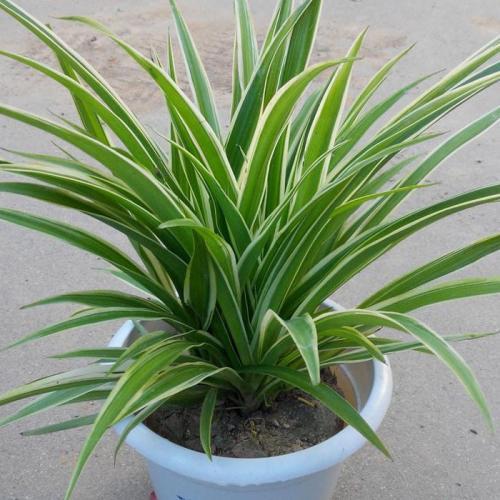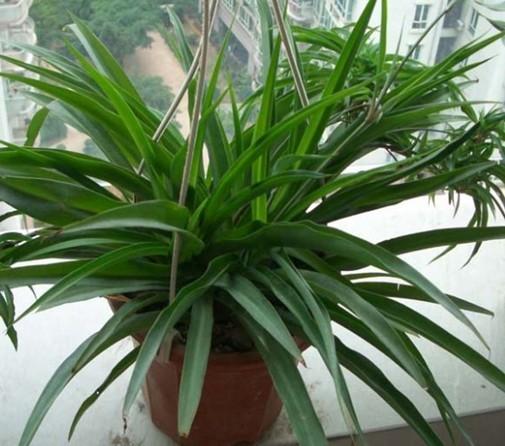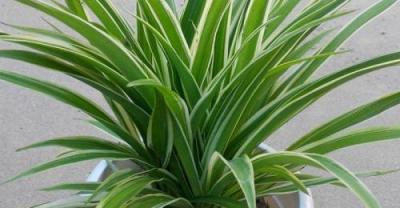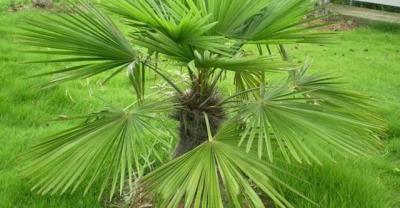Planting method and Propagation of Flowers-- Cymbidium
Cymbidium is a perennial evergreen herbaceous flower of Liliaceae. The hanging orchid gets its name because its roots and leaves are like orchid and the pedicel is stretched upside down. Hanging orchid is very popular in indoor potted plants in the north of China, and it can be watched all the year round in bright rooms. Its unique flower stem, drooping branches and leaves, beautiful leaf color, elegant and clear heart, evergreen all the year round, very chic, is an excellent indoor potted foliage flowers. Because there are many varieties, the leaf color changes greatly, and it is easy to cultivate, so it is very popular.

The hanging orchid is suspended or placed on the top of the flower rack or cupboard, and when the hanging flower stem is blown by the breeze, it is like a green butterfly dancing; many new plants with aerial roots grow on the flower stem, swinging with the wind, like a "green fairy" on the swing, but also like Tiannu scattered flowers, interesting.
1. Selection of flowerpots for Cymbidium Culture
(1) flowerpot requirements: muddy flowerpots, plastic pots, porcelain pots and pottery pots can be used for cultivation. If you want to hang cultivation, you should choose a flowerpot with hooks.
(2) flowerpot size: the orchid can be planted in a pot with a diameter of 14Mel and 18cm.
Cymbal
two。 Selection of basin soil for hanging orchid culture
It is proposed to use 3 parts of rotten leaf soil, 3 parts of garden soil, 3 parts of sand soil, 1 part of rotten cake fertilizer (or livestock and poultry manure), or 4 parts of rotten leaf soil, 3 parts of garden soil (peat soil), 2 parts of river sand and 1 part of rotten cake fertilizer.
The basin is changed from March to April every year. After the excess fleshy root is trimmed slightly, the excess fleshy root is planted in a new pot and placed in a shaded place. After the plant resumes growth, it will be maintained and watched normally.
3. Watering method of Cymbidium Culture
The hanging orchid likes the humid environment, should maintain the high air humidity, needs to keep the basin soil moist during the growth period. However, due to the storage of a large amount of water in its fleshy roots, it has a strong ability to resist drought and will not die if it is not watered for several days. It should be well watered in summer and spray water on the branches and leaves every evening to keep the air moist. Move indoors in the first ten days of October and put it in the sun. When the temperature is high at noon every 5-7 days, spray and wash the branches and leaves with water close to room temperature. But the basin soil should be on the dry side.
4. Fertilization method of Cymbidium Culture
In the vigorous growth season of spring and autumn, thin liquid fertilizer is applied every 15 days or so, with fully mature cake fertilizer and water as good as 10%-15%; nitrogen, phosphorus and potassium fertilizer solution with a concentration of 0.1%-0.3% can also be applied; topdressing should be stopped during high temperature in summer and dormancy in winter. Flower and leaf varieties should apply less nitrogen fertilizer, otherwise the white or yellow markings on the leaves will become lighter, affecting the ornamental effect.
Cymbal
5. Lighting requirements of Cymbidium Culture
Hanging orchids prefer a semi-overcast environment and are afraid of strong light, especially in the north, where 50% and 70% of the sun should be covered in spring, summer and autumn, otherwise sunburn is easy to occur and plant growth is seriously poor. Especially the varieties of flowers and leaves are more afraid of strong sunlight. The varieties of flowers and leaves grow brighter in places with weak light, and the white and yellow parts are more prominent. The light is weak in winter and can be placed in the direction of light, and it can be maintained and managed in a cool and ventilated place in summer.

6. Matters needing attention in Cymbidium Culture
The main results are as follows: (1) after changing the basin in spring, it can be cultured in a semi-shady place, and can be moved to a place with light after survival. Spring is the season for the rapid growth of Cymbidium, so we should ensure an adequate supply of water and fertilizer. When the temperature is not high, it can be cultured in full light, and the light around noon can be obscured when the temperature rises. If the leaves are found to be dull and light green during the growing period, urea can be applied 1000 times for 1-2 times. If cultivated in the room, when the light is insufficient, the leaf color is easy to show yellowish green, which can be moved out to increase the light.
(2) the hanging orchid is resistant to high temperature and can not bear the hot sun. If the sun is strong, the leaves of the hanging orchid are easy to burn and need shade in summer. The family can place the orchid in a brightly lit room to watch. In summer, water supply should be strengthened and water should be sprinkled frequently to increase air humidity.
(3) when the temperature is cool in early autumn, the growth of Cymbidium is accelerated, which can appropriately increase the light in the morning and evening, apply topdressing, and pay attention to water supply. Due to the dry climate in autumn, more water should be sprinkled to improve air humidity. After the temperature drops at the end of autumn, attention should be paid to keeping the indoor temperature above 5 ℃ and gradually moving it to a place with light to make the basin soil moist. When the temperature is high at noon, water should be sprayed on the leaves and around it several times.
Cymbal
(4) the orchid is not cold-resistant and can survive the winter safely when the room temperature is above 5 ℃. When the temperature is low in winter, the orchid should be placed in full light, watering should be less, so that the basin soil is slightly partial, not fertilizing.

7. Breeding methods of Cymbidium Culture
The propagation of Cymbidium is very easy, and it is generally propagated by the method of dividing plants. the small plants on the flower stems can be cut off and planted at any time from spring to autumn, or the roots of the old plants can be separated and planted in early spring.
The method of propagation can be carried out in other seasons except that the temperature is too low in winter and is not suitable for ramet. The plants of 2 to 3 years old can be divided in spring, and the watering should be stopped before the plants are changed, so that the pot soil can be properly dried to facilitate the emergence of plants. after the plants are removed from the pot, the old culture soil is removed, divided into several plants and planted in the pot respectively.
When propagating with the seedlings with roots at the tip of the flowering stem, the clusters of small plants with roots at the tip of the stem should be removed. Break it into small individual plants, and then plant them in the pot. However, planting should not be too deep, too deep is not conducive to sprouting and slow growth.
- Prev

Planting method and field management of asparagus
A few days ago, a friend on the official account asked about the planting method of asparagus. It is also suitable for planting now, so let's just talk about its planting today.
- Next

What is the price of planting dentures?
What is the price of planting dentures? We all know that missing teeth will seriously affect normal chewing and personal image, so many people with missing teeth will choose to inlay teeth.
Related
- Fuxing push coffee new agricultural production and marketing class: lack of small-scale processing plants
- Jujube rice field leisure farm deep ploughing Yilan for five years to create a space for organic food and play
- Nongyu Farm-A trial of organic papaya for brave women with advanced technology
- Four points for attention in the prevention and control of diseases and insect pests of edible fungi
- How to add nutrient solution to Edible Fungi
- Is there any good way to control edible fungus mites?
- Open Inoculation Technology of Edible Fungi
- Is there any clever way to use fertilizer for edible fungus in winter?
- What agents are used to kill the pathogens of edible fungi in the mushroom shed?
- Rapid drying of Edible Fungi

